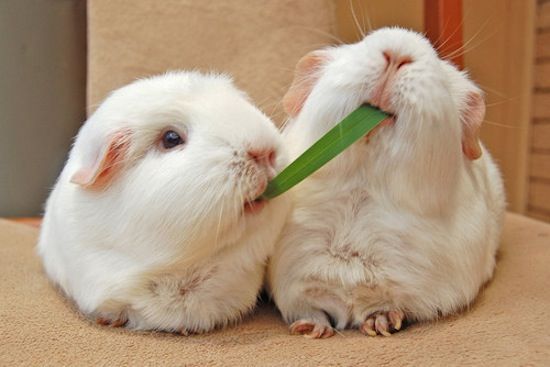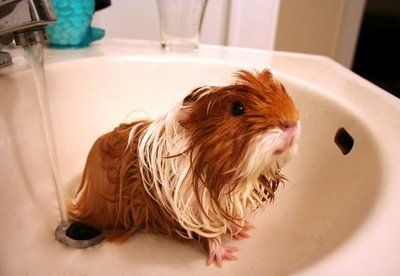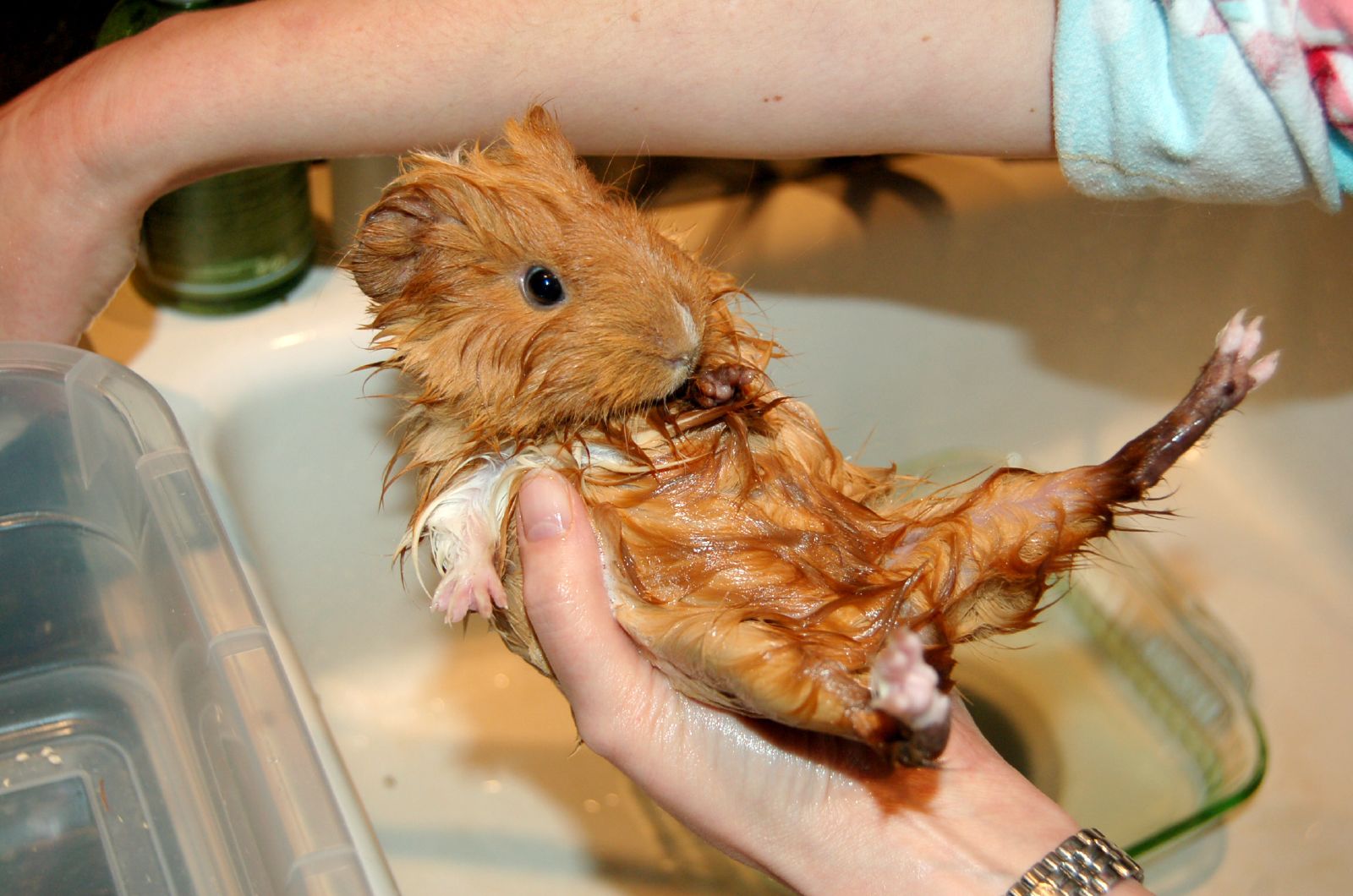General Care

Daily Care
On a day to day basis, guinea pigs don't need too much. For pellets, they should get about 1/8-1/4 cup a day, so just refilling their food bowl once or twice a day should be enough. You can just pop a chunk of hay in once a day and that will hold them over along with the food. They shouldn't run completely out of hay. They can also be given about a cup a leafy greens a day, like romaine lettuce. They would also appreciate things like carrots or fresh fruit a few times a week. For a complete list of what they can and cannot eat, check out Safe Foods Page. For water, the water bottle should be dumped out and refilled twice a day. You can get away with once a day but twice is definitely preferred.
Cage Cleaning
The frequency at which you should clean the cage varies on how large the cage is and how many guinea pigs you have. My rule of thumb is once it starts to smell its time to clean. It isn't too difficult to clean a cage, all that really needs to be done is to get rid of the old bedding, wipe everything down with pet safe disinfectant wipes, then put new bedding in. Every month or two you should really scrub the cage out and all the things inside of it (water bottles, food bowls, houses, etc.).
Grooming
This doesn't apply too much to short hair pigs, but for longer haired ones daily brushing is a good idea to keep the hair straight and to prevent knotting and padding. Because they are so close to the ground, trimming the hair of longer haired guinea pigs is a good idea since the hair just gets dragged across the dirty ground and can pick up all sorts of nasty things.
Clipping Toenails
Guinea pig toenails can grow quickly sometimes and monthly clipping is a good idea. For a clipper you can use cat clippers or a special small animal/guinea pig clipper would be preferable. The same rules as cats and dogs apply to guinea pigs. You have to cut it down to the quick inside the nail (you'll see something of different colour inside centre of the nail). As with cats and dogs, if you cut into the quick you'll cause bleeding and the guinea pig won't appreciate it. To stop bleeding if you do cut too far down, you can use styptic pen. Never put a guinea pig back into the cage while it's toenails are bleeding, you could risk a nasty potentially life-threatening infection.


Bathing
Guinea pigs almost never need baths and many never are bathed, but sometimes it may be necessary. While they do clean themselves, sometimes there are things out of their control that you will have to deal with. Especially if they catch a fungal or mite infection. I always cleaned mine once a year unless they needed more. If you don't do it right, you can risk a few potential health problems. Before you pop them into the bath, you'll need shampoo. There are a lot of small animal or guinea pig specific shampoos that will work fine, many rabbit shampoos will work too. The water should be a luke-warm temperature, not hot but not cold either. Make sure the water isn't coming out too hard to hurt the pig too. To bathe all you need to do is put the guinea pig in, get it wet, shampoo it, rinse it. Make sure to get all shampoo out of the hair and don't let any water or anything get into the eyes or ears. To dry off, get a towel, wrap them up in it, dry them a bit with the towel, and hold your wrapped guinea pig close to you to dry. You can use your own body heat to help keep them warm, don't worry about a little bit of shivering as they will be cold. They can get chilled very easily here which could cause things like pneumonia. They can get back to their cage as soon as they are mostly dry and no longer shivering.
Exercise
They need some amount of time outside their cage every day. Guinea pigs appreciate some time to just run around and explore their surrounding, they are actually very curious animals. If you let them outdoors, make sure to watch them closely, between predators and things that could be poisonous there are a few dangers outside. If you do let them outside so they can run around and eat the grass and whatnot, just be sure that there aren't any pesticides or fresh fertilizer down.
Social Needs
Guinea pigs actually require a lot of attention and this specificity is why it is so recommended to have a second guinea pig. If you have a lone guinea pig, the cage should be placed where there are a lot of people and it can get a lot of interaction. They need a minimum of an hour a day with their human to stay happy. If you have a pair, that its not as much of an issue but still you should spend at least 20 minutes a day with them. They can get lonely very easily which could cause them to be depressed and stop eating.
Moving
If you move, it may take a few weeks for your guinea pig to adjust to it's new surrounding. Don't worry if it doesn't eat or drink as much, just give some extra attention and they'll be back to themselves in a little bit of time. Another important thing to note is the water. Guinea pigs can be very finicky about their water and chances are if you move the taste of your water may change. They may not immediately want to drink the new water. To help this, put bottled water into their water bottle and slowly introduce larger amounts of whatever water you intend to have them drink until they are only drinking the new water. This can be done over the course of two or three weeks starting off with only bottled water.